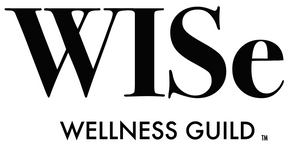
Gentle Movement: The History & Benefits of Pilates
Pilates, often referred to as "Contrology," is a popular exercise system that has gained worldwide recognition for its remarkable impact on physical fitness, flexibility, and mental well-being. Developed in the early 20th century by Joseph Pilates, this practice has a rich history and has evolved into various forms over the years. In this blog, we will take a closer look at the history of Pilates, its core principles, and the diverse types of movements that make it so effective.
The History of Pilates
Joseph Hubertus Pilates, born in Germany in 1883, was a remarkable individual who played a pivotal role in the development of the Pilates method. He was a sickly child, which motivated him to explore physical fitness and wellness. During World War I, he interned in a camp for enemy aliens, where he began devising a series of exercises for his fellow inmates. These exercises later formed the foundation of the Pilates system, emphasizing the use of the mind to control the muscles. After the war, Joseph Pilates moved to the United States, where he opened his first studio in New York City. The method gained popularity among dancers, and its benefits soon reached a broader audience.
The Core Principles of Pilates
Pilates is based on several core principles that guide its practice. These principles include:
-
Breath: Proper breathing is central to Pilates. The diaphragmatic breathing technique used in Pilates helps practitioners connect with their core muscles and promotes relaxation.
-
Concentration: Concentration is vital in Pilates. It encourages focus on the present moment and the precision of movements.
-
Control: Pilates is often called "Contrology" because of the emphasis on control. Every movement is performed with control and precision.
-
Centering: The core, often referred to as the "powerhouse," is the center of Pilates practice. Strengthening the core is a primary objective.
-
Precision: Precision is key in Pilates to maximize the effectiveness of each movement and minimize the risk of injury.
-
Flow: Movements in Pilates are designed to flow smoothly from one to the next, promoting flexibility and grace.
Types of Pilates Movements
Pilates comprises a variety of exercises, with each type emphasizing specific aspects of physical fitness. Here are some of the most common types:
-
Mat Pilates: This is the foundation of Pilates, involving exercises performed on a mat using body weight for resistance. Mat Pilates is accessible and can be done virtually anywhere.
-
Reformer Pilates: The reformer is a specialized machine that uses springs and straps to provide resistance. It offers a wide range of exercises for all fitness levels.
-
Cadillac or Trapeze Table: The Cadillac is another machine that enhances the versatility of Pilates exercises. It consists of various attachments for a more comprehensive workout.
-
Chair Pilates: The Pilates chair, also known as the Wunda chair, challenges balance and strength with a variety of seated and standing exercises.
-
Barre Pilates: A fusion of Pilates and ballet, Barre Pilates combines core-strengthening movements with the grace and elegance of dance.
Benefits of Pilates
Pilates offers a multitude of benefits, including:
-
Improved Core Strength: Pilates targets the core muscles, resulting in a stronger and more stable torso.
-
Enhanced Flexibility: Regular practice increases flexibility and range of motion in the body.
-
Better Posture: Pilates promotes body awareness, which can lead to improved posture.
-
Stress Reduction: The focus on breath and concentration aids in relaxation and stress reduction.
-
Increased Muscle Tone: Pilates builds lean muscle, leading to a more toned physique.
-
Injury Prevention: By improving body awareness and balance, Pilates can reduce the risk of injury.
-
Mental Clarity: Many practitioners report increased mental clarity and a sense of well-being after a Pilates session.
The history of Pilates is a testament to the transformative power of this exercise method. With its emphasis on core principles, a range of movement types, and numerous benefits, Pilates continues to be a popular choice for individuals seeking improved physical fitness and mental well-being. Whether you're a beginner or an experienced practitioner, Pilates has something to offer, making it a versatile and enduring practice for people of all ages and fitness levels.

Leave a comment